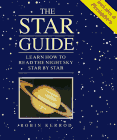![]()
Lesson
Two: Movements of the Constellations
by John Barra
![]()
Books Recommended by the Webmaster
![]()
![]()
![]()
As
you watch the same constellations over a period of months, you will complete
the second step in learning the sky: learning the paths that different
constellations take across the sky. Study your planisphere to follow their
patterns of movements. These patterns will help you learn which constellations
are visible during different times of the year and how long they are visible
for.
The constellations near the North Star are visible all year long. They are called circumpolar constellations. However, when such constellations are below the North Star (due north and near the horizon), they are more difficult to see. It is better to view them when they are east, south ("above"), or west of the North Star. Examples of circumpolar constellations are Ursa Major, Cassiopeia and Cepheus.
Another group of constellations rise generally in the east, travel across the sky to a point near the zenith or directly overhead, and set generally in the west. There are best viewed when they are up high in the sky, between forth-five degrees above the eastern horizon and forty-five degrees above the western horizon. These constellations are visible during normal nighttime viewing for approximately half of the year. Among this large group of constellations are Hercules, Cygnus, and Leo.
Finally, there are other constellations that rise between the southeast and south and set between the south and southwest. They may be viewable only two to four months out of the year. Because they are always low in the sky, they are often harder to see. You may need to find an observing location that does not have city lights to the south to view these constellations effectively. Included in this group are Scorpius, Cetus and Hydra.
You will soon learn other patterns. All the constellations are in our galaxy, however, those found within our solar system's galactic plane are considered to be in the "Milky Way". You will quickly see that these are much more dense with stars than the rest of the constellations. You will also learn the twelve constellations of the Zodiac. There too are found in the plane of our solar system, where you can also find the Sun, the Moon and the planets.
“KEEPING A STAR LOG”
You should keep a journal or star log beginning with the first time you gaze at the stars. Such a log will record you progress. In future years, you will be able to look back with satisfaction at what you have accomplished. It will also remind you to take a second or third look at objects you viewed in the past and found particularly noteworthy. Your journal will tell you when the best time would be to view these objects.
Your log book doesn't have to be anything fancy. It may be as simple as a spiral notebook. In fact, that is what I used in 1991, when I started my avocation of stargazing by learning the constellations. It is what I still use.
I suggest you create a monthly calendar on the left-hand pages. You can make the calendars a month or two in advance. List the dates of the phases of the Moon and the dates of any special events such as eclipses or occultation's. You might consider subscribing to Astronomy or Sky and Telescope magazine. They contain such calendar information.
Put on your calendar page a list of constellations or other objects you intend to view that month. You can then use the right-hand pages to record your observations. Your entry can be as simple or as detailed as you choose. You should at least record the date, time, and place of viewing; the sky conditions; and a brief description of what you viewed. You may also want to include a simple sketch from time to time. At first you will be mainly listing the constellations you have studied and viewed. You may also want to keep, on a separate page, a running list of constellations as you learn them. Before long you will be starting lists of other objects as well.
You'll be well on your way to learning the sky. At the same time you will also come to know the common names of some of the brighter stars with those constellations. Knowing them will also help you learn how to starhop. And soon you will be ready for Lesson Three.
![]()
![]()
copyright © Peoria Astronomical Society 1994-2004.

 The Star Guide : Learn How to Read the Night Sky Star by Star: Includes
a Planisphere by Robin Kerrod
The Star Guide : Learn How to Read the Night Sky Star by Star: Includes
a Planisphere by Robin Kerrod